Poble Espanyol in Barcelona
Poble Espanyol: Culture, Gastronomy, Artisans and Events
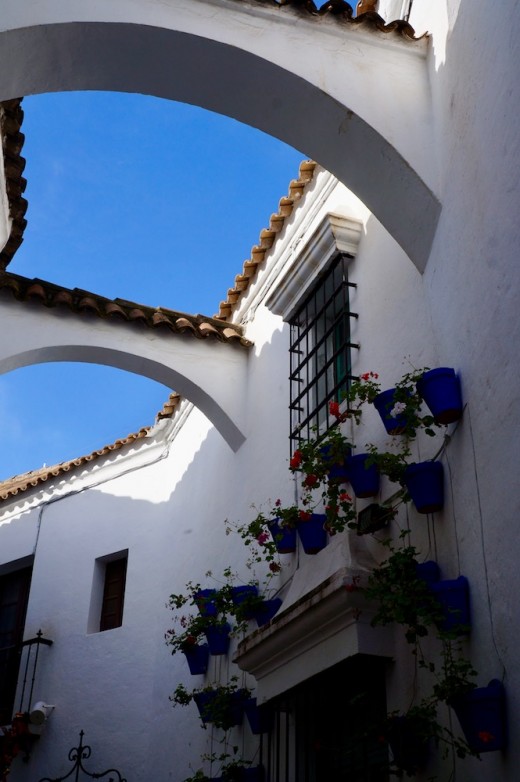
Why Visit Pueblo Espanyol?
When you can’t see a whole country, yet you know all of it has a magnetic history, stunning architecture and amazing variations in culture, what do you do? You can sit on your couch and watch travelogues or read other folks adventures. That gets boring very quickly.
In Barcelona, you can go to Pueblo Espanyol and walk through living, working examples of the architecture that expresses Spain's history. From the hot plains in the middle to the heavy Arabic influences of the South, the mountains of the north and the glorious beaches of the East, Spain as an endlessly unfolding magic road of enticing places and with Poble, you can get an intro to most of them.
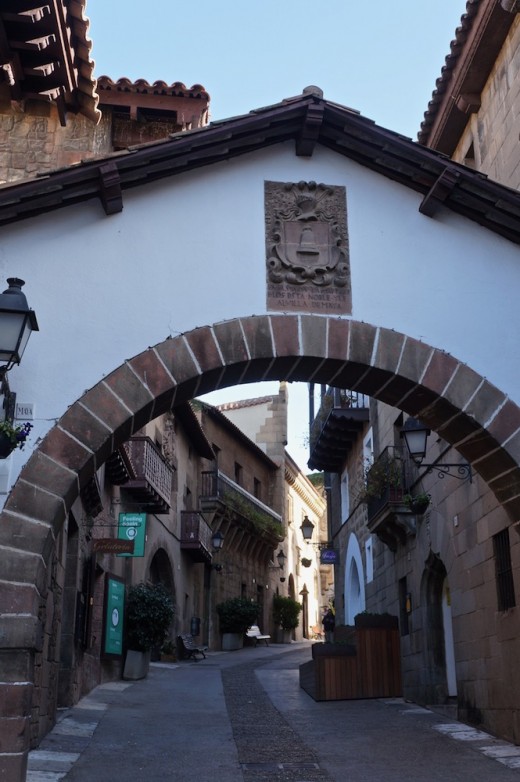
What is Poble Espanyol About?
Built for the 1929 Barcelona International Expositions, Poble Espanyol gave visitors a sense of the entirety of Spain before the age of Ryan Air and the low cost carriers, decent road links and really rapid trains.
As you walk through the streets, you see historic buildings from every region and most of the faces and doorways are originals brought from towns and villages where reconstruction was made necessary by the endless wars of the 19th and 20th century.
Some of the buildings contain displays reaching back to Roman times but often focused on the era that the building was completed, with many from the 14th to the 17th centuries.
It's about enabling visitors to have a Feel for Spain in a day, know about its culture and tradition, its food and art, (even Picasso puts his nose in ) and what makes it the country so distinct and special.
Where is Poble Espanyol
The Entrance to Poble Espanyol
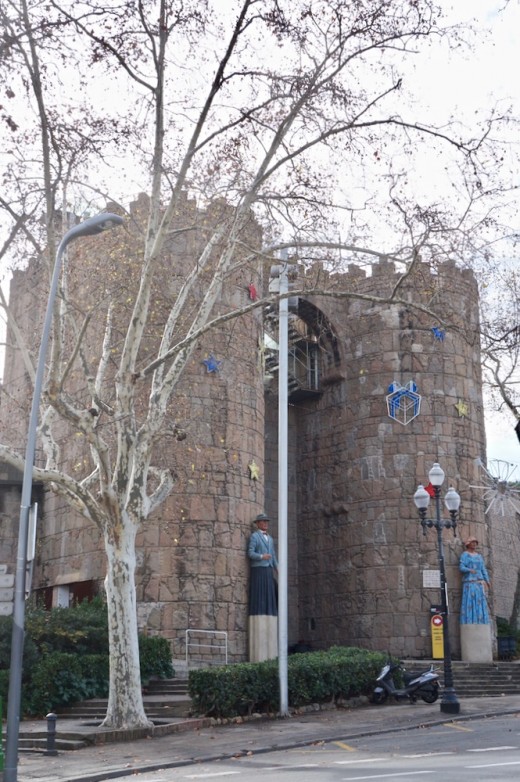
Feeling Spain
Feeling Spain is the theme encompassing Poble Espanyol. Promoted as a concept by Catalan architect, Puig Cadafalch, Poble Espanyol was built by the architects Francesc Folguera and Ramon Reventós, the art critic Miquel Utrillo and the painter Xavier Nogués who visited 600,000 sites all over Spain.
From these they selected the ones to represent the key characteristics of each region. They organized the village into cultural themes:
- The Center
- The Way of St. James
- The North
- The South
- The Mediterranean
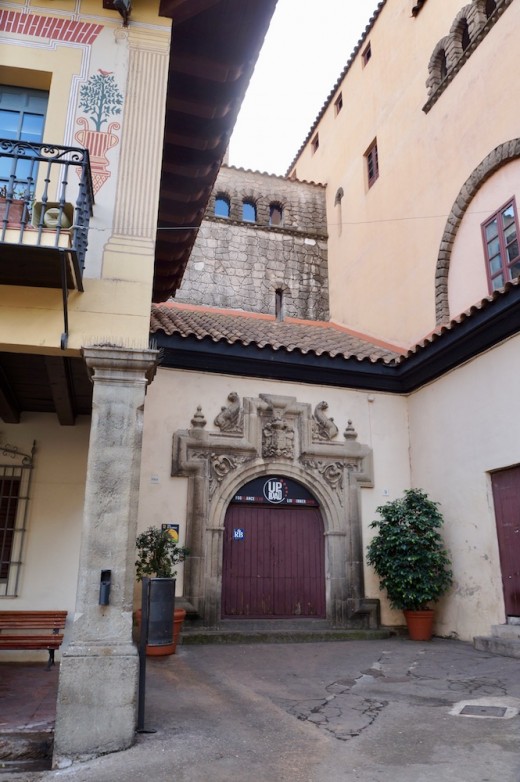
The Centre of Spain
You enter Poble Espanyol through the Torres de Avila and you break out into a huge square, the Plaza Mayor. This big square in the middle is so typical of Spanish villages and even in cities, the organization is around such squares. Around here you will have a sense of the plains and hills of La Mancha and see displays from the centre of Spain which includes cities such as Madrid, Toledo, Salamanca, Caceres, Leon, Merida and Badajoz. The history and drama in each one of these is worth the visit.
We enjoyed popping into these places but also became fascinated by the displays here. Madrid is, of course, the capital of Spain so it offers visitors more variety. But Merida has Spain's top Roman ruins as the retirement community for an entire Roman Legion and if you're into historical battles, Badajoz is the place to go. Salamanca's centre has been designated a UNESCO World Heritage site. Poble shows these areas very well and can kick off your interest in more research or a real visit.
As you move to the North, you are welcomed by the Pilgrim on his way to Santiago de Compostela following the Way of St. James. Even today, about 200,000 Pilgrims walk the Camino coming from all over Europe and the world for this journey. The Camino is given here in Poble a special place because the routes used by the Pilgrims encompass most of the country.
The streets in Poble are narrow and winding and covered with paving stones and Romanesque blocks. You can almost feel the 15th century through your shoes.
A Pilgrim on the Way of St. James
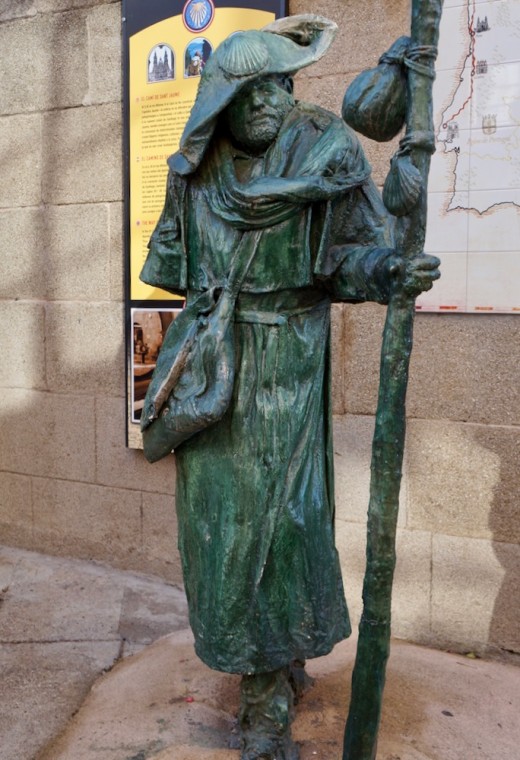
The Way of St. James
This has been a famous pilgrimage popular in Europe from the early 9th century. Pilgrims walk from countries close by to visit the tomb of St. James which was found in Santiago de Compostela. Each country has stories of its heroes setting off to pay a moral debt.
The Legend tells us that St. James found his way to Galicia to preach there but later decided to return to the Holy Land where he was beheaded. His disciples managed to bring his body back through a ship in Jaffa which conducted them back to Galicia, specifically Iria Flavia.
This place was then governed by the local pagan queen, Loba, from whom the disciples asked for permission to bury the body of St. James. Annoyed by this request, the Queen sent them to a sacred mountain allegedly to pick a pair of oxen to finish their journey. But in this mountain dwelt a dragon, and she hoped the dragon would kill the Christians.
The dragon indeed attacked the disciples but at the sight of the Cross they were carrying, the dragon disintegrated. So, they went to collect the oxen which were really wild bulls the Queen used to bring her enemies to subjugation. Again, when the bulls saw the Cross, they calmed down and carried the body of St James to what is now called Compostela.
In the 9th century, St. James body was rediscovered by a hermit called Pelagius, who after observing strange lights in a local forest went to the Bishop, Theodemar, for help. The Bishop was the guided to the spot by a star thus, the name Compostela was really derived after Campus Stellae, Field of Stars.
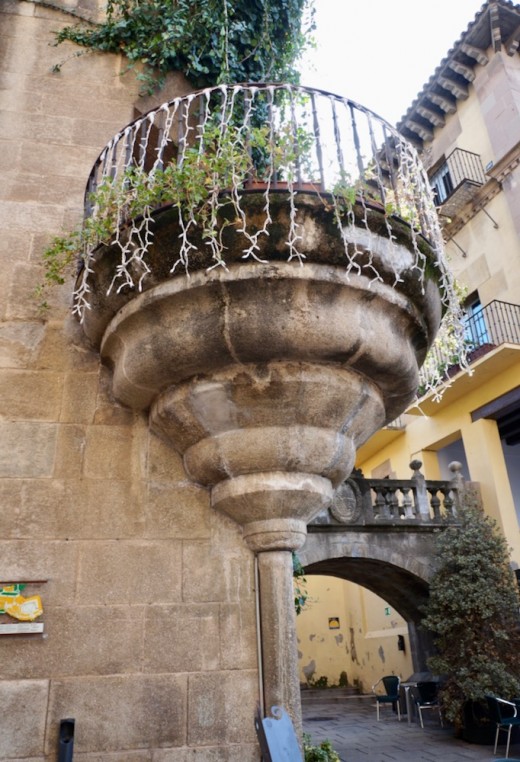
The Mourner's Corner
This is one of the most interesting features of the Poble. This tells the story of a Count who lived in this house with his daughter. His greatest aim in life is to look for a suitor for his daughter and put a smile on her face. But because the daughter has not really been well endowed with attractive features, the suitor never came. So, one day, the Count decided to put on a disguise and started courting his daughter and he finally saw the smile on her face. However, not long after that, the Count got ill and passed away. The daughter was taken ill by her sorrow that her father died and her suitor has not come back that she soon followed her father. This Corner has then been referred to as the Mourner's Corner.
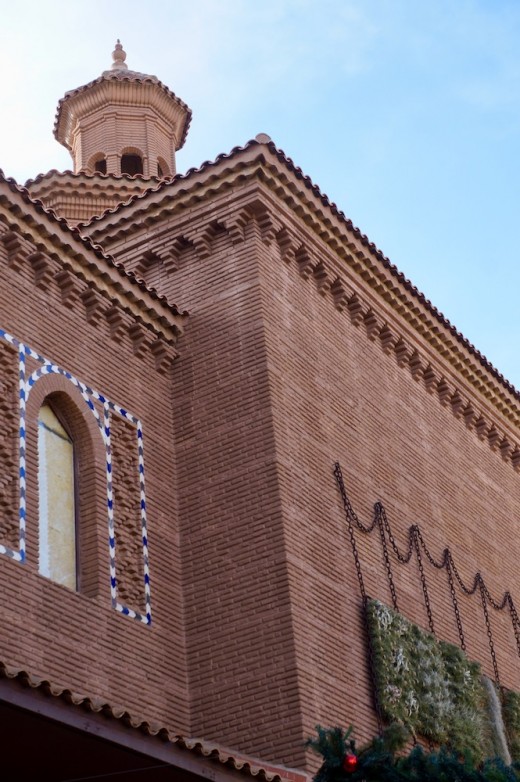
The North
While often overlooked by tourists, the North of Spain is one of the most stimulating places to visit. Close to the Pyrenees, it is cold in the winter. In the summer, the beach of San Sebastian is one to enjoy as tourists flock to the more popular ones down south. Bilbao has the stunning Guggenhein 2 Museum by the Canadian-American architect, Frank Gehry.
The Way of St. James ends up in the medieval city of Santiago de Compostela which is part of this northern area of Spain. The Way is one of the best ways to explore Spain as the routes are well travelled and well marked with the much needed services on the way. The Plaza Aragonese discussed below are part of this area as well.
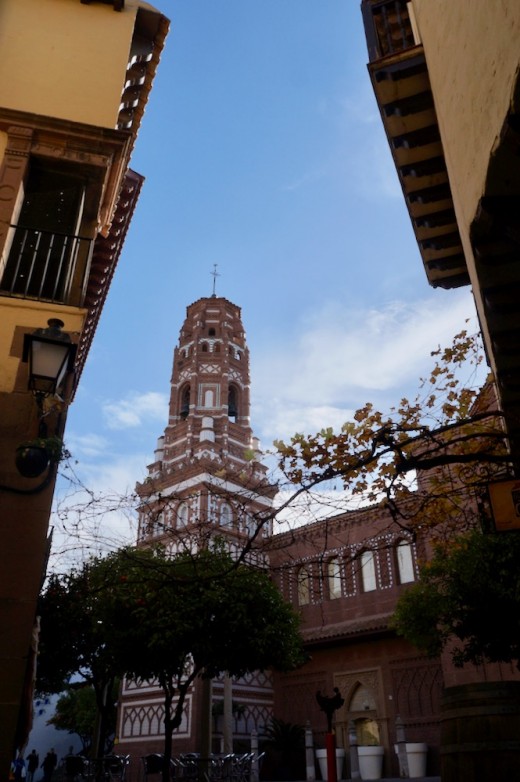
The Aragon Square
Aragon is a landlocked region in northeastern Spain comprising the provinces of Huesca, Zaragoza and Teruel. It is not to be confused with the Crown of Aragon which included a much bigger area.
Aragon is known for its ornate, Moorish-influenced Mudéjar architecture. Most famous of these is the Basilica of the Nuestra Señora del Pilar in Zaragoza. Pobles displays these beautifully
Andalusia
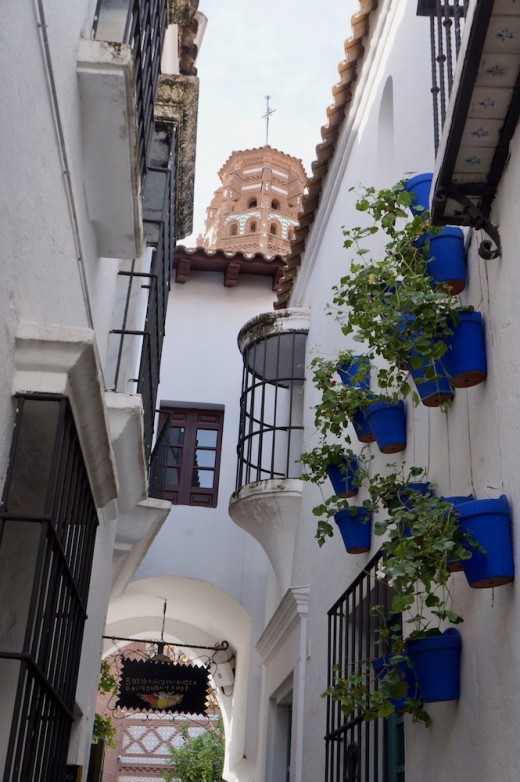
The South
The South segment of Poble Espanyol, Andalucia, showcases its well known cities such as Malaga, Sevilla, Cordoba and Granada and its Moorish influence having been under the Moors from the 8th to the 15th century. So, the architecture here reminds visitors of the Alhambra in Granada, the Mezquita in Cordoba, the Giralda and Alcazar in Seville. The whitewashed buildings of the South are also showcased here in Poble.
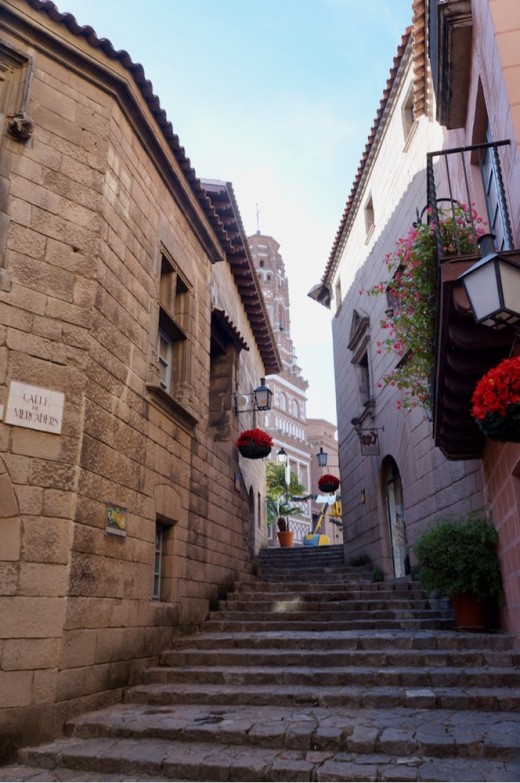
The Mediterranean
The Spanish cities on the Mediterranean Coast boast of milder climates reflected in their way of life. Barcelona is part of this area together with Valencia. These coastal cities showcase their Maritime tradition, art and gastronomy. In some cases, they feature different languages and cultures and their uniqueness has a political overtone emphasized in the architecture (think Gaudi).
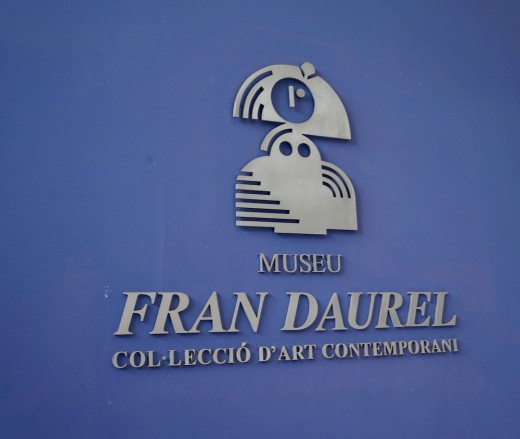
Fran Daurel Museum
Inaugurated in 2001, this Museum is inside the Poble Espanyol. It has over 300 works by internationally renowned artists housed artistically on several levels. This is worth a visit. Showcased are the variety of styles of many contemporary Spanish artists. Picasso, Dali and Miro and others with links to Barcelona are all featured here.
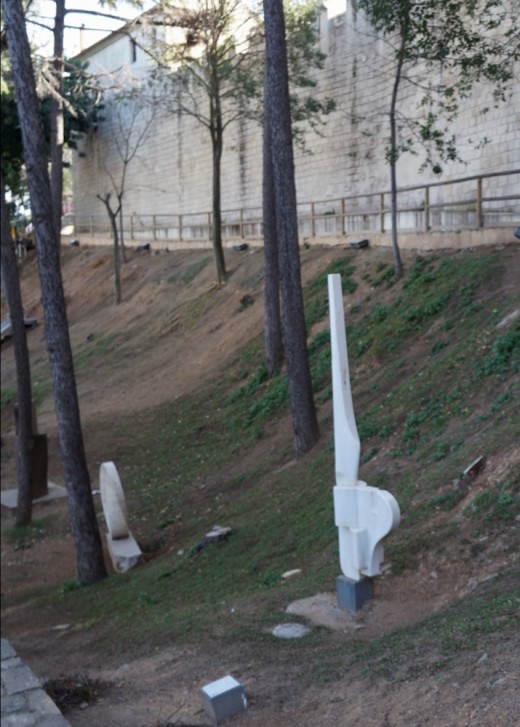
The Sculpture Garden
36 sculptures by 27 different artists using different styles in a natural surrounding of about 3,000 square meters. This is the Sculpture Garden that you can enjoy inside the Poble Espanyol. What a refreshing break from the recreated village.
Artisans at Work
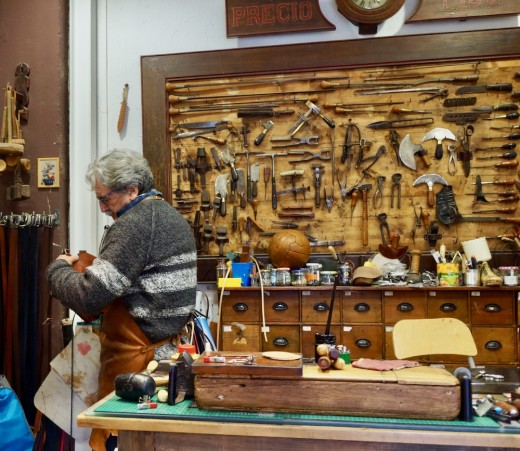
Poble Espanyol: a Living Site
To make it a living site, about 20 artisans work through the range of crafts that have been part of Spanish history, and of course, sold products on site. The artisans are interesting as they still use the age old ways of making their wares. You should see the workshop of the guitar maker. There are some beautiful guitars there on display. and he builds as you watch.
We went inside the leather crafters shop where we were greeted by his white miniature poodle watching the store as the craftsman worked out back. We had a good look and settled on a beautifully crafted belt.
We also visited the glass maker and the workshop is big enough to really watch him at work. While some people think these are tourist traps, for us, it is a connection to the past, to the artisans who love their craft.
Although there are about 20 artisans working in Poble, we took time to visit these artisans and it was worthwhile:
- Guitar Maker
- Leather Crafter
- Glass Blower
Castille y Leon
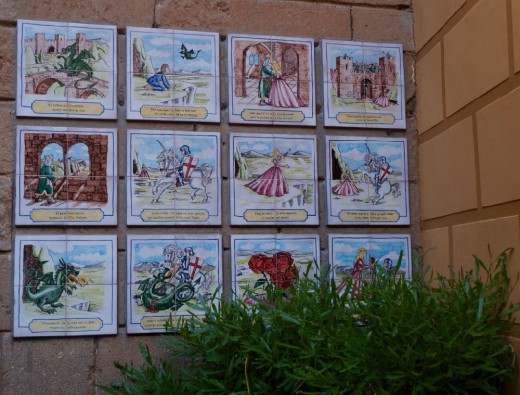
A Poll on Poble Espanyol?
What do you think of Poble Espanyol?
Here's a video of the Poble Espanyol
A Visit to Poble Espanyol
Do you recommend a visit to Poble Espanyol?
Aranda de Duero
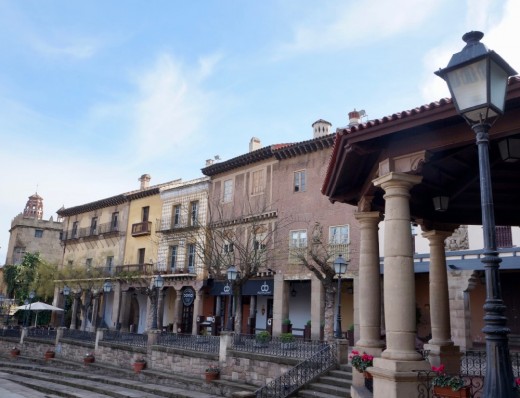
Cafes, Music and Other Events in Poble Espanyol
There are Musical Performances and other events organized in Poble Espanyol most of which showcase Spanish culture but also other events just for fun and entertainment. Flamenco dances or fiestas are some of the events here so check out the scheduled events and join the fun.
There are many activities for kids, classes and workshops so you can learn from some of the artisans in the place.
There are Cafes serving food specialties from different regions so this is your chance to sample food from places in Spain you have not yet been. When we went the first time, we enjoyed churros con chocolate and some turrones.
The Poble offers venues for all kinds of events even weddings. There are squares as open venues for events, churches that can accommodate banquets, and others that can even be recreated in this 40,000 sq. m. area.
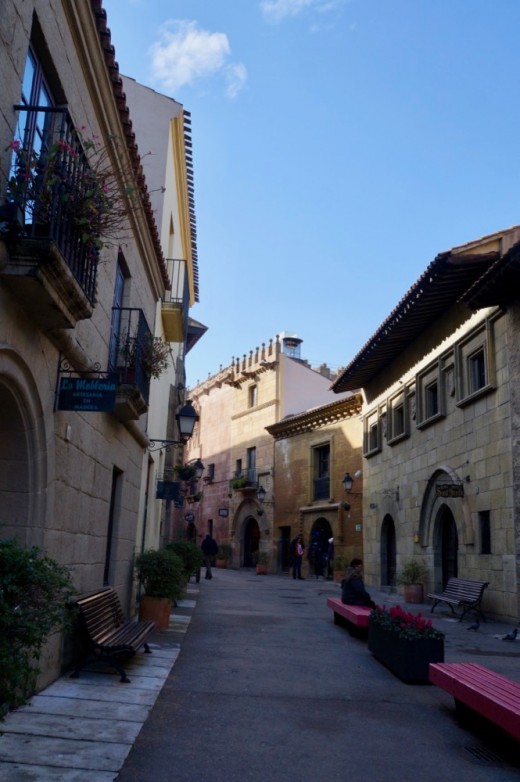
Our Impression of Poble Espanyol
In some ways, Poble Espanyol is overwhelming. There’s simply too much to absorb in a few hours and perhaps, a kilometre of walking. There’s truly a bit of everything. From Picasso to food, through lace, leather, glass and knives.
Located as it is immediately adjacent to the Museum of National of Art in Catalonia, it is very easy to visit the culture of Catalonia through the morning and the architectural history of Spain in the afternoon.
Although we have visited most of Spain, we found Poble, the miniature Spain to be absolutely intriguing. Each narrow street unfolded a new part of the country and original architecture to be considered.
For visitors with no time to see the cornucopia of Spanish history and culture, this is a one stop shop to give an overview and some ideas.
For opening hours and events, visit the Poble Espanyol website.
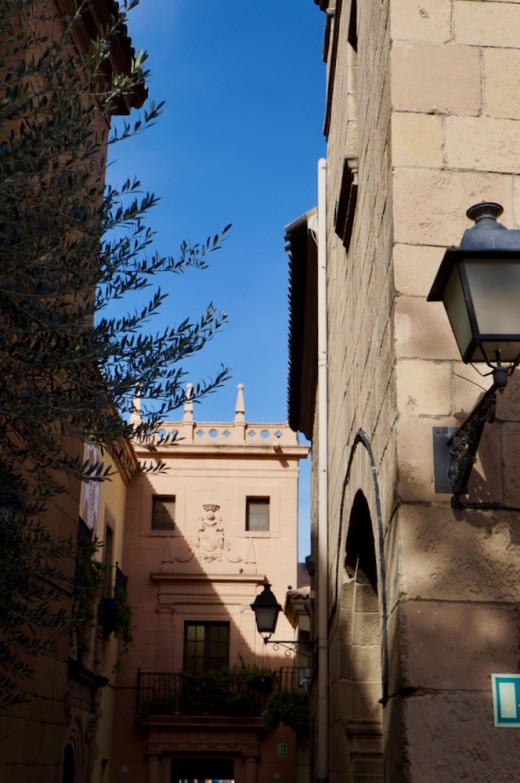
© 2018 Mary Norton








